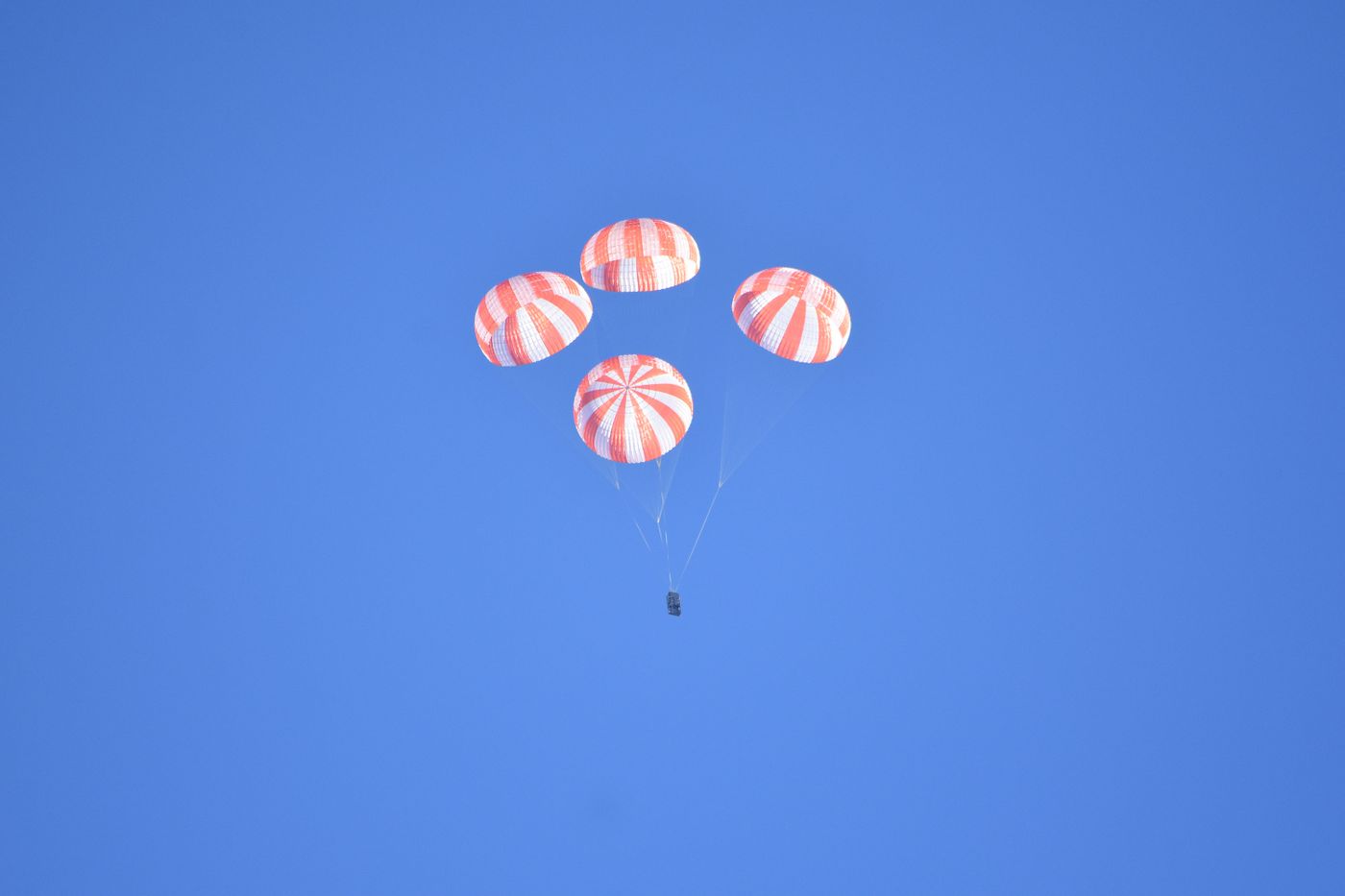SpaceX Has a Successful Parachute Landing Test for Dragon Spacecraft
SpaceX is experimenting with all kinds of landing technologies as a part of its commercial space program agreement with NASA. Recently, SpaceX used a combination of eight rocket thrusters to test a landing system capable of landing the Dragon 2 spacecraft with the accuracy of a helicopter, but before any kind of rocket-landing technology is ready for the big time, SpaceX has to perfect the design and will be using a parachute system for the time being.

Its Crew Dragon spacecraft, which can be used to bring astronauts back to the Earth from the International Space Station, has recently demonstrated a successful parachute landing in a desert in Coolidge, Arizona.
In the demonstration, four red and white parachutes were deployed at high altitudes thousands of feet from the ground thanks to a C-130 aircraft to test the reliability of the parachutes and a weight to simulate the weight of the Crew Dragon spacecraft was added to ensure that the parachutes could bring the weight down slow enough that any passengers would be safe.
You can watch the landing via NASA's video below:
When astronauts come back down to Earth with the Crew Dragon spacecraft by way of parachutes for real, they’ll be landing in the ocean, which provides an even softer landing than the ground does.
The goal is to start with using parachute technology to land the Crew Dragon spacecraft in the ocean, and then slowly transition to rocket landing technology on the ground in coming years. Ideally, the spacecraft should be designed to take advantage of rocket boosters for landing, and use the parachutes as a final line of landing defense should any of the rockets fail to deploy.
Both SpaceX and Boeing are competing to create a next-generation spacecraft for getting astronauts back to Earth safely, and SpaceX is spending a lot of its time perfecting rocket-landing technology, which may give it the upper hand in experience when all is said and done.
Despite the recent Falcon 9 rocket landing failure SpaceX had to grin and bear, their first landing attempt went beautifully. Competing comany Blue Origin, on the other hand, has successfully landed a rocket upright twice in a row.
Source: NASA








